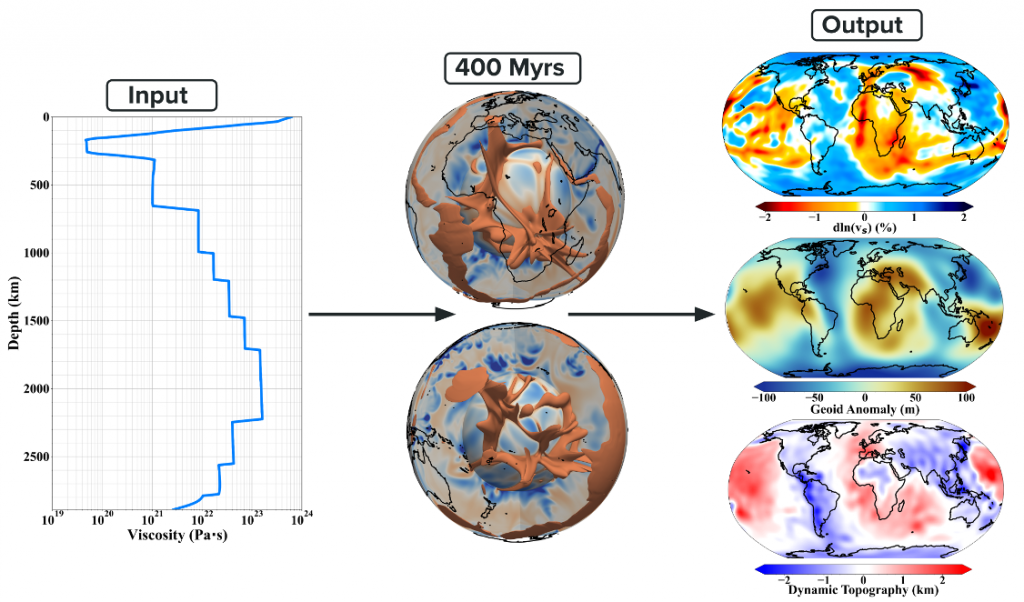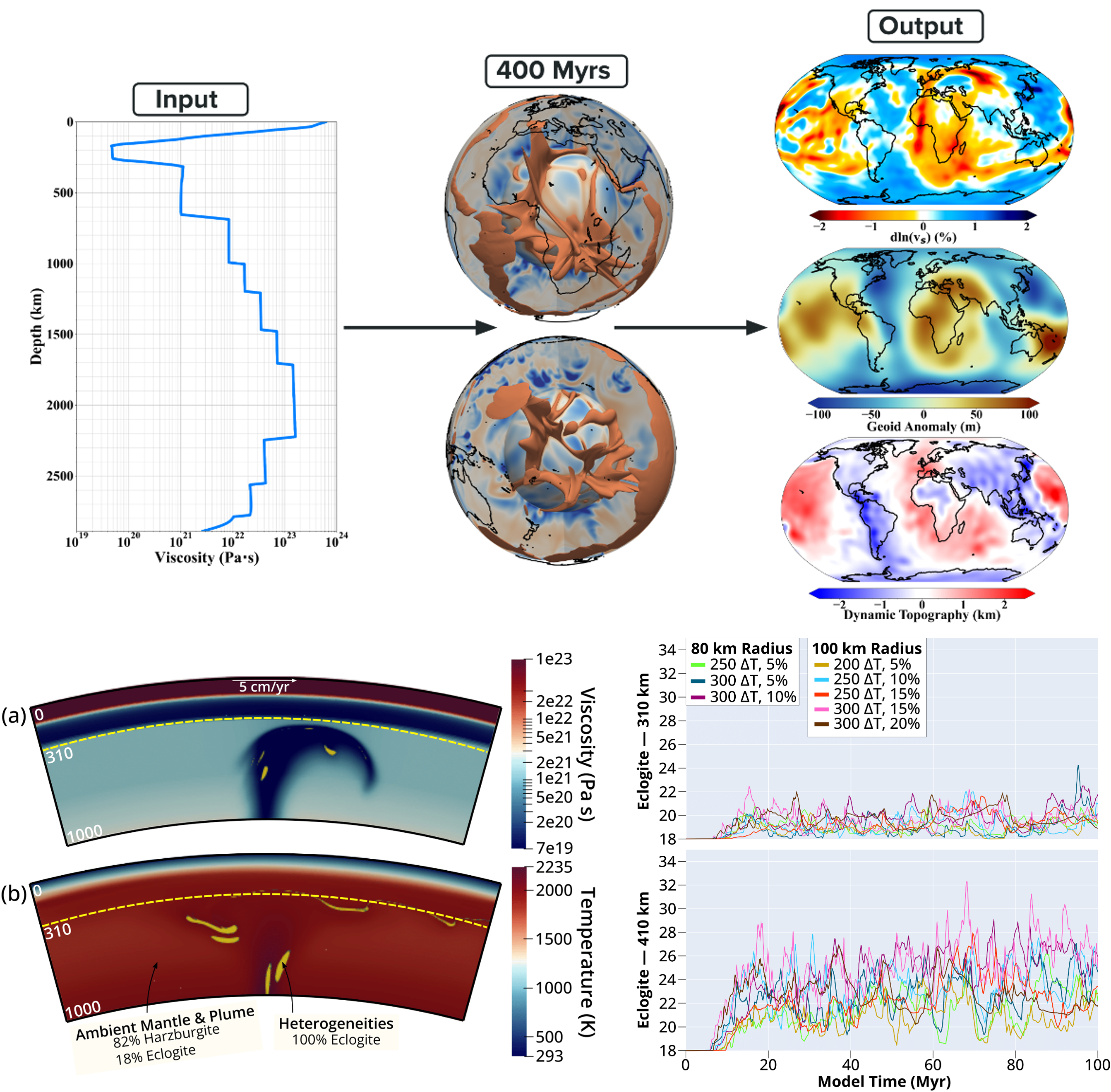We are excited to invite you to the 12th seminar of the 2025 Geology and Geophysics Seminar Series. This session will feature two engaging talks.
Our first speaker is Hamish Brown, a postdoctoral research fellow in the Research School of Earth Sciences, Australian National University. Hamish will be presenting on “Constraining mantle viscosity using dynamic topography, the geoid, and seismic heterogeneity,” where he uses high-resolution, time-dependent mantle circulation models to investigate how viscosity influences mantle structure and surface observations. By assimilating 400 million years of tectonic motion, his work offers fresh insights and tighter constraints on mantle viscosity as a function of depth.
Our second speaker is Martina Monaco, who completed her PhD in Geodynamics at the University of Florida. Martina will be presenting on “The thermochemical Hawaiian plume and its dynamic interplay with the X-discontinuity: a novel computational approach,” where she presents on how eclogitic heterogeneities interact with mantle plumes and limit material entrainment, using a newly developed method within the geodynamic modelling code ASPECT, her work offers tools and new insights into mid-mantle discontinuities and plume dynamics.
Date: July 9, 2025
Time: 11:00 a.m. – 12:00 p.m. AEST
Location: Room 104 (Auditorium Room 1), Michael Spence Building Auditorium (F23),
or Online (Join via zoom)
We look forward to seeing you there in person or joining us online!
https://uni-sydney.zoom.us/j/85296722357?from=addon
Talk 1: Speaker – Hamish Brown
Constraining mantle viscosity using dynamic topography, the geoid, and seismic heterogeneity.
Abstract
Mantle viscosity is crucial to reconstructing the dynamic evolution of our planet, yet it remains one of the largest outstanding uncertainties in global geodynamics. Present-day flow models based on global seismic tomography have provided classic first-order constraints on the mantle viscosity profile by matching models to surface observations such as the geoid and dynamic topography. A drawback, however, is that viscosity acts only to map a tomographically-derived density structure to observations. This means that the influence that viscosity has on mantle density structure is not accounted for, which could explain the significant outstanding uncertainties.
Here we tackle this problem using a suite of high resolution mantle circulation models which assimilate tectonic velocities over the past 400 Myrs and feature different input mantle viscosity profiles. The time-dependent nature of the models means that the influence of viscosity on mantle density structure is accounted for. The present-day predictions of the models are compared to observed dynamic topography, geoid undulations, and seismic tomography—which is an output of these models, rather than an input. We find that the input profile has a significant influence on the present-day density spectrum of the mantle, which in turn has a measurable effect on the considered observations. Only a 2x change in input viscosity can significantly reduce the match to observations. Accounting for the influence of viscosity on the mantle density field through time-dependent convection can therefore provide tighter constraints on mantle viscosity as a function of depth.
Graphical Abstract

Talk 2: Speaker – Martina Monaco
The thermochemical Hawaiian plume and its dynamic interplay with the X-discontinuity: a novel computational approach.
Abstract
In addition to the global discontinuities at 410 and 660 km depth, the mid-mantle features a plethora of local, and still poorly constrained, seismic discontinuities. The X-discontinuity, detected at 310 km depth beneath the Hawaiian hotspot, has recently been attributed to the coesite—stishovite phase transition. While the availability of silica at the relevant depths may be compatible with eclogitic material from past subduction entrained by the Hawaiian mantle plume, the dynamics governing such an entrainment remain speculative to this day. In recent years, seismological hypotheses have advanced accumulations of 40-50% eclogite at 310 km, a figure however proven to be irreplicable in Geodynamics.
To address these questions, we have developed a numerical method for the ASPECT code, which allows the user to superimpose known quantities of discrete eclogitic heterogeneities to a compositionally consistent mantle plume. This advance overcomes a critical model limitation: thermochemical mantle plumes are usually modeled as mechanical mixtures, which makes it impossible to isolate the behavior of the individual species.
Our key findings demonstrate that, both at the scale of the plume conduit as well as at the regional scale, no more than 19.5% eclogite, averaged over 100 Myr, may be entrained at 310 km depth. This threshold holds true regardless of the initially prescribed fractions of eclogite—5 to 20%—and across a wide range of plume radii and excess temperatures. Our study not only demonstrates that more vigorous plumes or higher eclogite entrainments are not correlated with increased material segregation, but also revises existing seismological hypotheses on the X-discontinuity, opening promising scenarios to investigate the dynamics of denser materials and their influence on the convective planform at large.
Graphical Abstract

![]()

